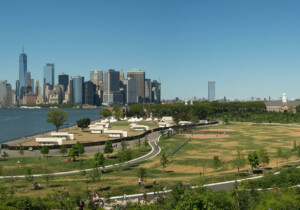Ah, the joy of New York City’s rush-hour subway commute. If you live in a major metropolitan area, you know the thrill in stepping off one crowded, dirty subway car into a wall of people to push your way onto the next crowded subway car. You turn up your music, or that riveting Podcast with that guy from that thing, and you power through it.
While you might be accustomed to it, the daily commute has plenty of room for improvement. Two new approaches to ease crowding on public transit systems show how some easy adjustments could make big-city commutes considerably less hellish.
A group called the Efficient Passenger Project recently posted signs on New York City subway platforms telling straphangers which section of a train to board to efficiently make their future transfer. But only days after the signs went up, the city’s Metropolitan Transit Authority tore them down.
“These signs have the potential to cause crowding conditions in certain platform areas and will create uneven loading in that some train cars will be overcrowded while others will be under-utilized,” said an MTA spokesperson. Despite the swift removal of the signs, the guerrilla campaign, part of a trend known as Tactical Urbanism, isn’t dead just yet. The anonymous individual behind EPP told New York Magazine, “I’m really going for it. I’m ready for them. My plan is to eventually convince the MTA that this is a plan worth allowing. I want to beat them with the numbers—just keep putting them up.” But, as of early March, even the group’s website had been taken down.
Over in Santiago, Chile, a more official plan to place a small gate on a crowded platform has already seen remarkable success in easing congestion. The gate, which separates exiting passengers from transferring passengers, has reduced crowding, boosted passenger capacity and increased train frequency. The plan, though, does take some adjusting to—passengers must learn where to board a train to make sure they end up on their preferred side of the gate.
A project like this shows that dramatic improvements to public transit don’t always require big investments; they require ingenuity and a willingness to try. We don’t know if the Efficient Passenger Project would have seen similar success because it wasn’t given that chance to succeed—or fail—on its own accord.










